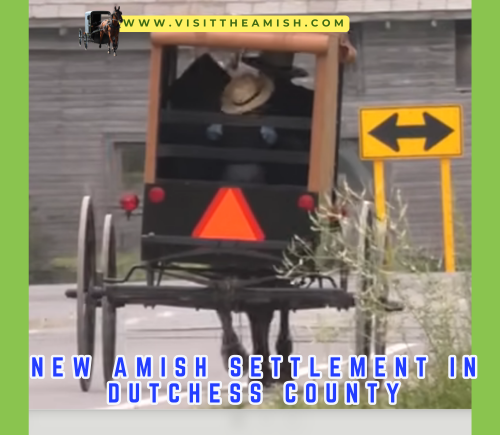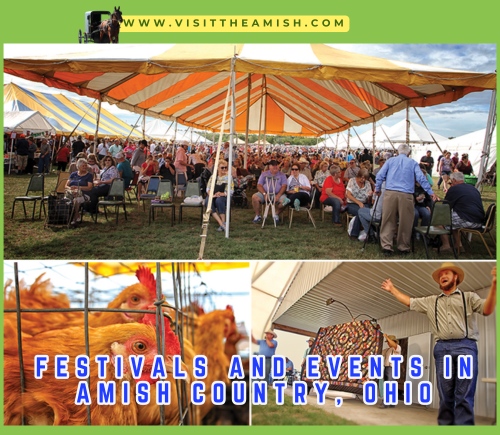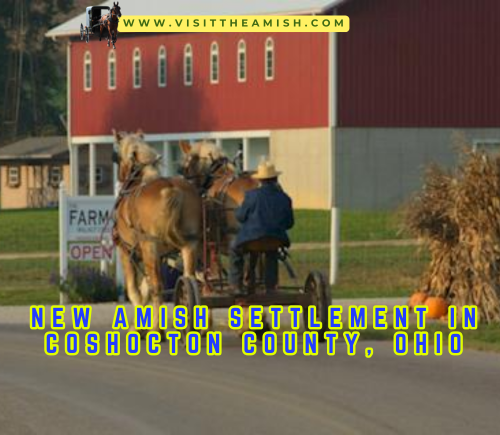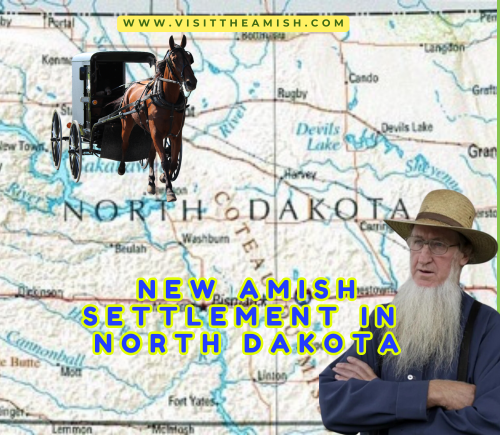New Amish Settlement Takes Root in Central Ohio’s Fertile Farmland
A quiet revolution is unfolding in the heart of Ohio as a new Amish settlement establishes itself in the rolling hills of Coshocton County. This burgeoning community, nestled between the towns of Warsaw and West Lafayette, represents a significant expansion of Amish presence in the state, which already boasts the second-largest Amish population in the United States[4].
The settlement, which began with just five families in 2020, has grown steadily over the past five years. Today, it comprises approximately 25 households, drawn by the area’s abundant farmland and the opportunity to preserve their traditional way of life.
“We came here seeking a place where we could farm and raise our families according to our beliefs,” says Jacob Miller, one of the settlement’s founding members. “Coshocton County has welcomed us with open arms, and we’re grateful for the chance to contribute to this community.”
The Millers, along with four other families, initially moved to the area from Holmes County, Ohio[5]. Since then, word has spread through the Amish network, attracting more families looking for a fresh start.
A Growing Community
The settlement’s growth has not been without challenges. The families are spread across a 10-mile radius, which can mean up to 60-minute buggy rides for Sunday worship services, which rotate between homes[2]. However, this has not dampened their spirits or their determination to build a thriving community.
“We see the distance as an opportunity to strengthen our bonds,” explains Sarah Yoder, whose family was among the second wave of settlers. “The journey to church gives us time to reflect and appreciate the beauty of God’s creation around us.”
As the community grows, so does its economic footprint. Several Amish-owned businesses have sprung up, catering to both the local population and curious visitors from surrounding areas.
Emerging Businesses
One of the most notable new enterprises is the Coshocton County Amish Market, a bustling hub of activity on the outskirts of Warsaw. The market, which opened its doors in 2024, offers a wide range of products, from fresh produce and baked goods to handcrafted furniture and quilts.
“We wanted to create a place where our community could showcase their skills and share our culture with our neighbors,” says Eli Hochstetler, the market’s manager. “It’s been wonderful to see how people from all walks of life come together here.”
The market has quickly become a popular destination for both locals and tourists, drawn by the promise of high-quality, locally-sourced goods. On any given Saturday, the parking lot is a mix of horse-drawn buggies and “English” (non-Amish) cars, a visual representation of the two worlds coming together.
Another thriving business is the Sunset Valley Furniture Workshop, run by the Schwartz family. Specializing in solid wood furniture, the workshop has gained a reputation for its exquisite craftsmanship and attention to detail.
“We believe in creating pieces that will last for generations,” says Daniel Schwartz, the workshop’s founder. “Each table, chair, or cabinet we make carries with it a piece of our heritage and our commitment to quality.”
The workshop has seen a steady increase in orders, not just from the local area but from customers across Ohio and neighboring states. This success has allowed the Schwartz family to employ several young men from the community, providing valuable skills training and economic opportunities.
Preserving Traditions in a Modern World
While embracing entrepreneurship, the Coshocton County Amish remain committed to their traditional way of life. Horse-drawn buggies are still the primary mode of transportation, and homes are not connected to the electrical grid[4]. However, some adaptations have been made to accommodate business needs.
“We use solar panels to power our refrigeration units at the market,” explains Hochstetler. “It’s a way for us to maintain our values while meeting health regulations and customer expectations.”
This balance between tradition and practicality is evident throughout the settlement. At the Yoder family’s dairy farm, modern milking equipment is powered by a diesel generator, allowing them to meet production standards while staying off the electrical grid.
Community Integration and Challenges
The influx of Amish families has not gone unnoticed by the wider Coshocton County community. Local officials have had to adapt to the presence of horse-drawn buggies on roads, installing “Share the Road” signs and working with Amish leaders to ensure safety for all travelers[4].
“It’s been a learning process for everyone,” admits County Commissioner John Smith. “But we’ve found that open communication and mutual respect go a long way in addressing any concerns.”
The Amish have also made efforts to integrate into the larger community while maintaining their distinct identity. They participate in local farmers’ markets, contribute to disaster relief efforts, and have even formed a volunteer fire brigade to assist in emergencies.
However, challenges remain. The rapid growth of the settlement has put pressure on available farmland, leading some families to look further afield for suitable properties. There are also ongoing discussions about the need for an Amish school as more young families join the community.
Looking to the Future
Despite these challenges, the mood in the Coshocton County Amish settlement is optimistic. Plans are underway for the construction of a dedicated meeting house, which will serve as a central gathering place for worship and community events.
“We see this as a sign of our commitment to putting down roots here,” says Bishop Amos Lapp. “With God’s blessing, we hope to see our children and grandchildren thrive in this place.”
As the settlement approaches its fifth anniversary, its impact on Coshocton County is undeniable. The Amish presence has brought new economic opportunities, a renewed focus on traditional craftsmanship, and a reminder of the values of simplicity and community in an increasingly complex world.
“We may live differently from our neighbors,” reflects Jacob Miller, “but we share the same hopes for a peaceful, prosperous future. We’re grateful to be a part of this community and look forward to many more years of growth and friendship.”
As the sun sets over the patchwork of farms and workshops that make up this new Amish settlement, it’s clear that Coshocton County has become home to a community that is both deeply rooted in tradition and cautiously embracing the future. Their story is a testament to the enduring appeal of a simpler way of life and the power of community in an ever-changing world.
Amish Schoolhouse In Coshocton County
Citations:
[1] https://www.amish365.com/belle-center-ohio-new-order-amish/
[2] https://www.amish365.com/preble-county-eaton-new-paris-ohio-amish-settlement/
[3] https://warther.org/information.php
[4] https://www.statenews.org/section/the-ohio-newsroom/2024-05-28/your-new-neighbors-may-drive-a-buggy-ohios-amish-population-is-growing
[5] https://en.wikipedia.org/wiki/Ohio_Amish_Country
Like this:
Like Loading...


















